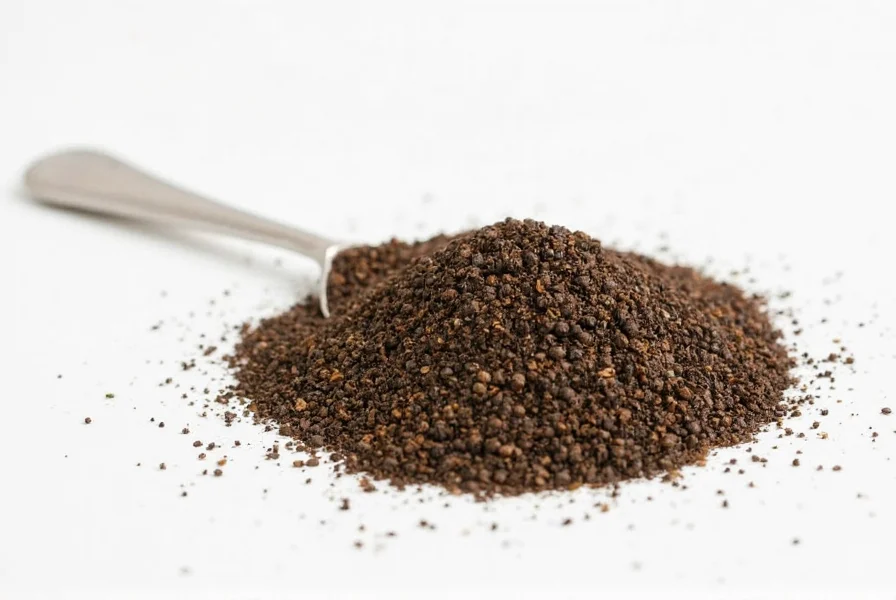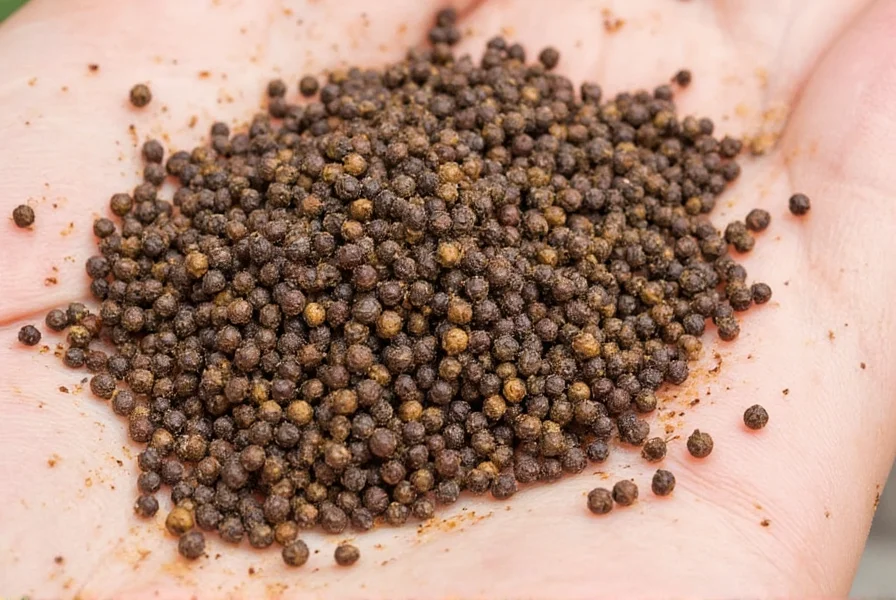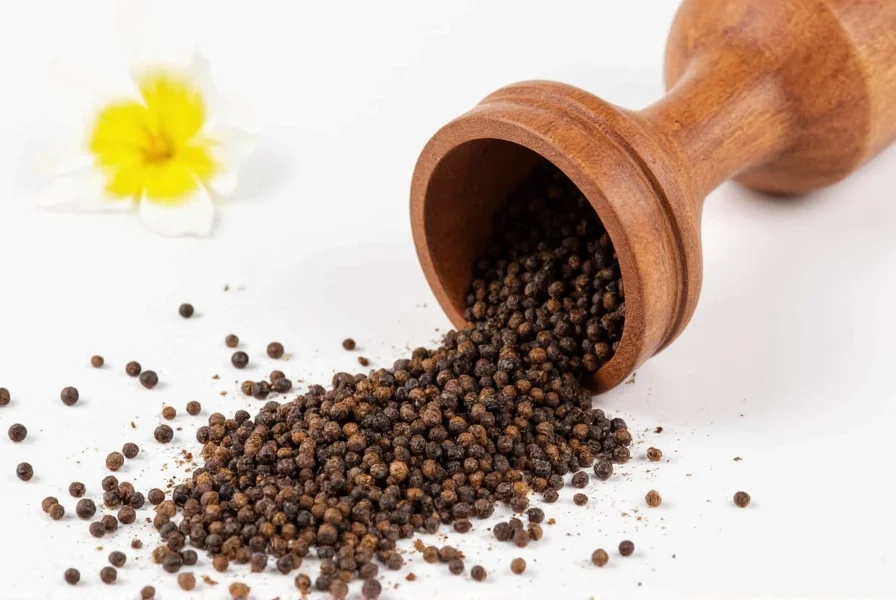Understanding the science and technique behind grinding black pepper transforms ordinary seasoning into a culinary revelation. While pre-ground pepper offers convenience, it sacrifices complexity and potency that only freshly cracked peppercorns can deliver. This guide explores why the grinding process matters, how to select the right equipment, and techniques that maximize flavor in your cooking.
The Science Behind Freshly Ground Pepper
Black peppercorns contain essential oils and piperine—the compound responsible for pepper's characteristic heat and aroma. When whole, these compounds remain protected within the peppercorn's outer shell. Grinding ruptures the cell walls, releasing these volatile compounds. However, exposure to air causes rapid oxidation and evaporation. Studies show pre-ground pepper loses approximately 40% of its volatile compounds within five minutes and up to 80% within 15 minutes.
Professional chefs and food scientists agree that freshly ground pepper provides noticeably brighter, more complex flavor with subtle citrus and floral notes absent in pre-ground versions. The heat sensation also differs—freshly ground pepper delivers a cleaner, more immediate warmth that dissipates quickly, while pre-ground often leaves a harsher, lingering burn.
Pepper Grinder Types Compared
Not all grinders create equal results. The mechanism, material, and design significantly impact grind consistency and flavor release. Here's how common grinder types compare:
| Grinder Type | Best For | Grind Consistency | Maintenance Needs | Longevity |
|---|---|---|---|---|
| Ceramic Burr | All-purpose grinding | Most consistent across settings | Low (resists corrosion) | 10+ years |
| Stainless Steel Burr | Heavy use, coarse grinds | Good consistency | Moderate (can corrode) | 5-8 years |
| Manual Mill | Precise control, small batches | Variable (user-dependent) | High (frequent cleaning) | 3-5 years |
| Electric Grinder | Large quantities, convenience | Least consistent | Moderate (blade replacement) | 2-4 years |
Optimal Grinding Technique for Maximum Flavor
The proper grinding technique significantly impacts flavor extraction. Follow these evidence-based practices:
- Apply consistent, moderate pressure—excessive force generates heat that can degrade delicate flavor compounds
- Grind directly over food—capturing volatile compounds before they dissipate into air
- Adjust grind size according to dish—finer grinds for sauces and dressings, coarser for steaks and roasts
- Grind just before serving—pepper's flavor peak occurs within 60 seconds of grinding
For most applications, a medium-coarse grind (about the size of kosher salt crystals) provides optimal surface area for flavor release without becoming overly powdery. When seasoning meats, coarser grinds create better texture contrast and prevent over-seasoning.
Selecting Quality Peppercorns for Grinding
The starting material determines your maximum flavor potential. Look for these characteristics in whole peppercorns:
- Uniform color—dark brown to black with minimal variation (indicates proper drying)
- Firm texture—should feel heavy for their size and resist indentation when pressed
- Distinct aroma—should smell complex with notes of wood, citrus, and spice when crushed
- Recent harvest date—peppercorns maintain peak quality for 12-18 months when stored properly
Vietnamese Tellicherry and Lampong peppercorns consistently rank highest in blind taste tests for balanced heat and complex flavor profiles. For special occasions, try rare varieties like Madagascar or Brazilian pink peppercorns for unique flavor dimensions.

Storage Practices for Whole Peppercorns
Proper storage preserves the volatile compounds that make grinding worthwhile. Follow these storage guidelines:
- Store in airtight containers away from light and heat
- Maintain humidity below 60% to prevent moisture absorption
- Keep away from strong-smelling spices that can transfer odors
- Buy in quantities you'll use within 6 months for peak freshness
Contrary to popular belief, freezing whole peppercorns preserves freshness longer than room temperature storage. Place peppercorns in a vacuum-sealed bag and freeze for up to two years with minimal flavor degradation. Thaw at room temperature for 15 minutes before grinding.
When to Grind Pepper for Different Dishes
Timing matters as much as technique. Consider these recommendations for optimal flavor integration:
- Cream sauces and soups—grind pepper during final cooking stage to preserve volatile compounds
- Steaks and roasts—apply coarsely ground pepper immediately before cooking for crust formation
- Vinaigrettes and cold dishes—grind pepper directly into the mixture to maximize oil dispersion
- Baking applications—use pre-ground pepper as heat degrades fresh grind benefits
Avoid the common mistake of grinding pepper too early in the cooking process. High heat accelerates the degradation of volatile compounds, leaving only the piperine (heat component) while losing the nuanced flavor elements.

Common Pepper Grinding Mistakes to Avoid
Even experienced cooks make these errors that compromise pepper flavor:
- Using dull grinders—creates inconsistent particle size and generates excess heat
- Overfilling grinder chambers—causes uneven grinding and potential clogging
- Grinding through moisture—water exposure rusts mechanisms and degrades flavor
- Using the same grinder for salt and pepper—salt corrodes pepper grinder mechanisms
Regular maintenance extends your grinder's life and preserves flavor quality. Clean ceramic mechanisms with uncooked rice monthly to remove residue. For steel mechanisms, disassemble and wipe with a dry cloth every 2-3 months. Never wash grinders with water unless specifically designed for it.
Practical Application for Home Cooks
Implementing these principles doesn't require professional equipment. Start with a quality ceramic burr grinder and Tellicherry peppercorns. Store peppercorns in a small, dark glass jar with an airtight seal. Develop the habit of grinding pepper directly over your finished dishes rather than adding pre-ground pepper during cooking. Within weeks, you'll notice enhanced complexity in your seasoning that transforms simple dishes into restaurant-quality creations.
Remember that pepper grinding isn't just about heat—it's about unlocking a spectrum of flavors that elevate your entire culinary experience. The small investment in proper technique yields significant returns in meal quality and enjoyment.











 浙公网安备
33010002000092号
浙公网安备
33010002000092号 浙B2-20120091-4
浙B2-20120091-4